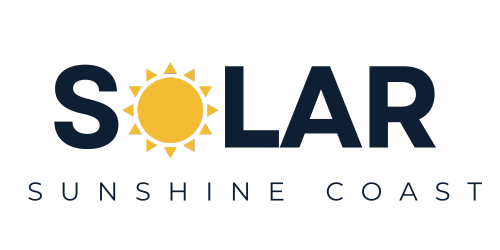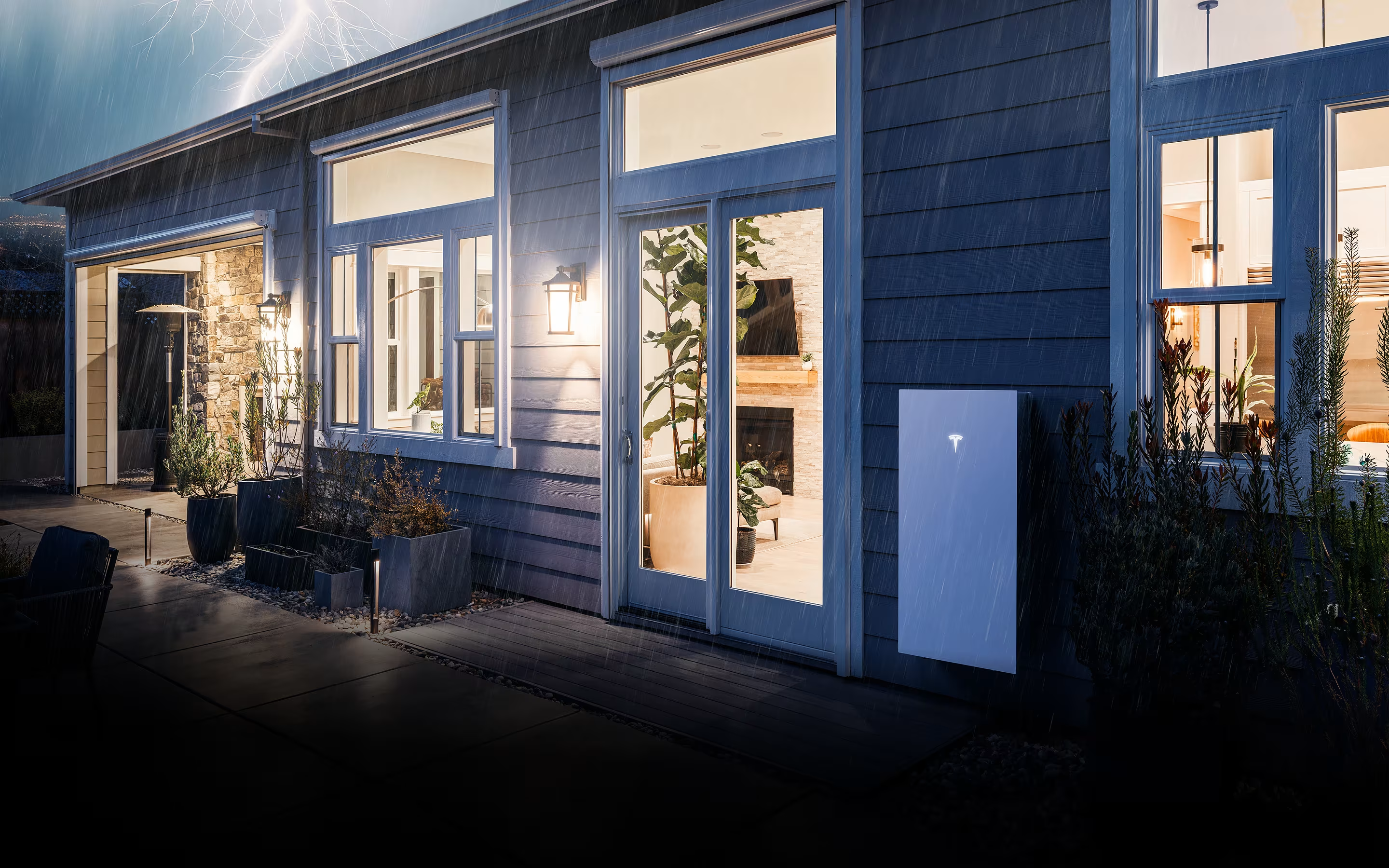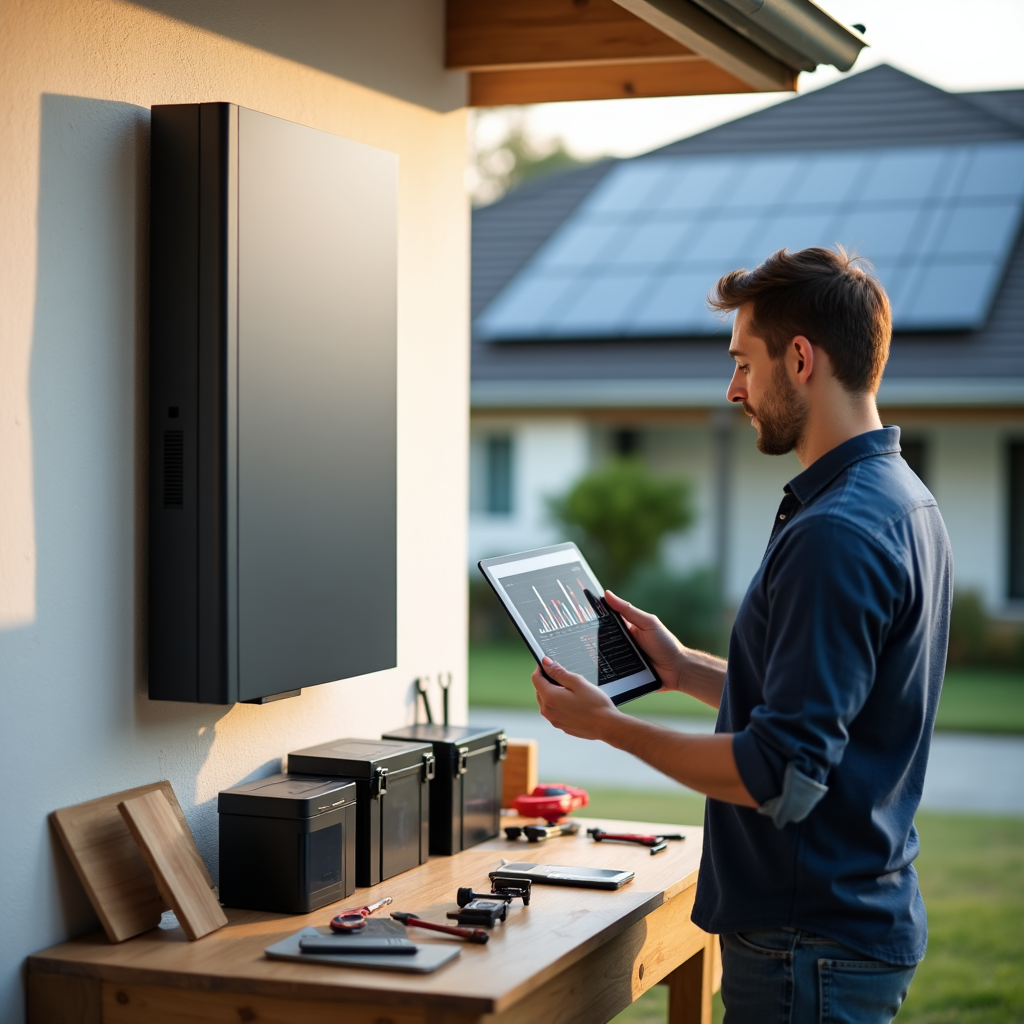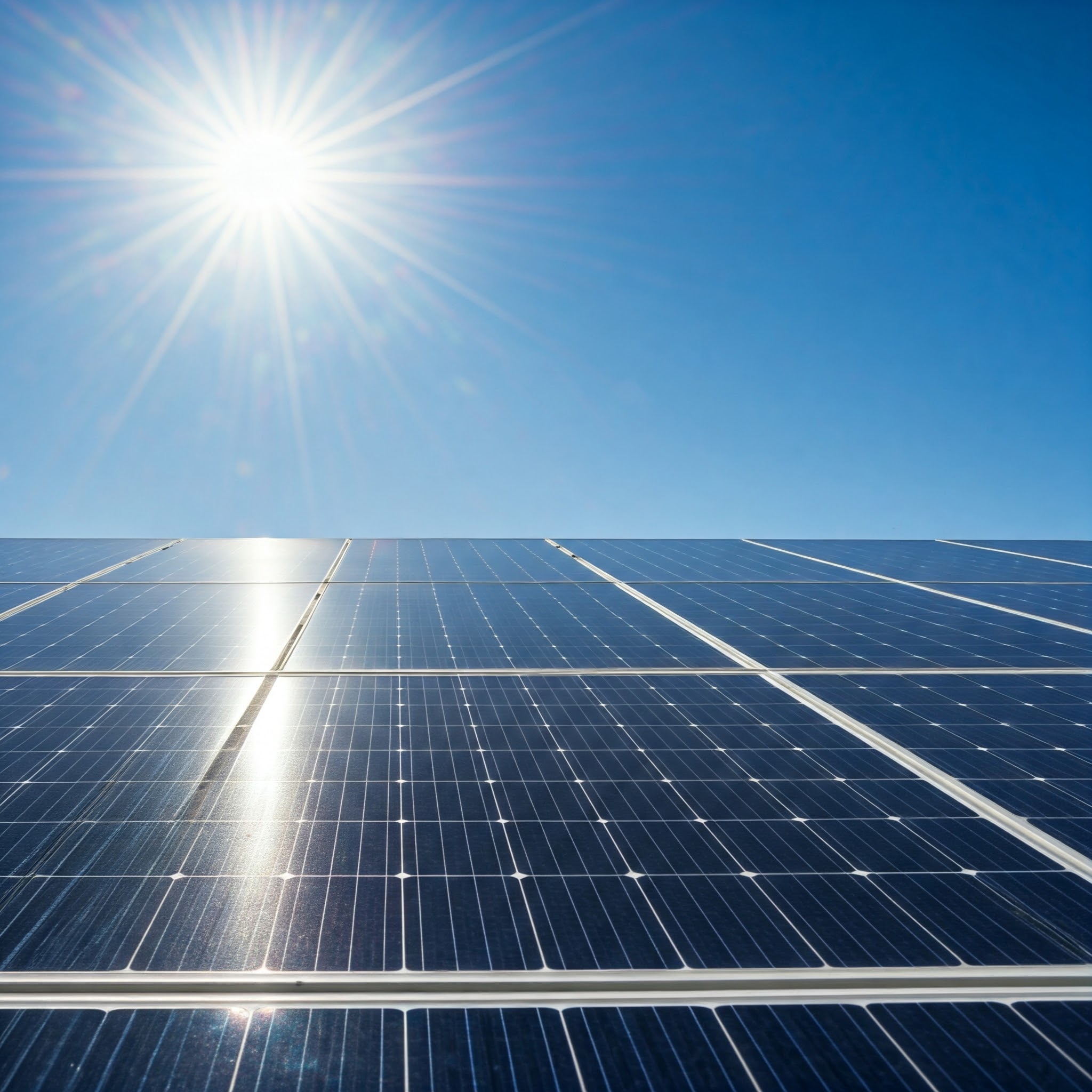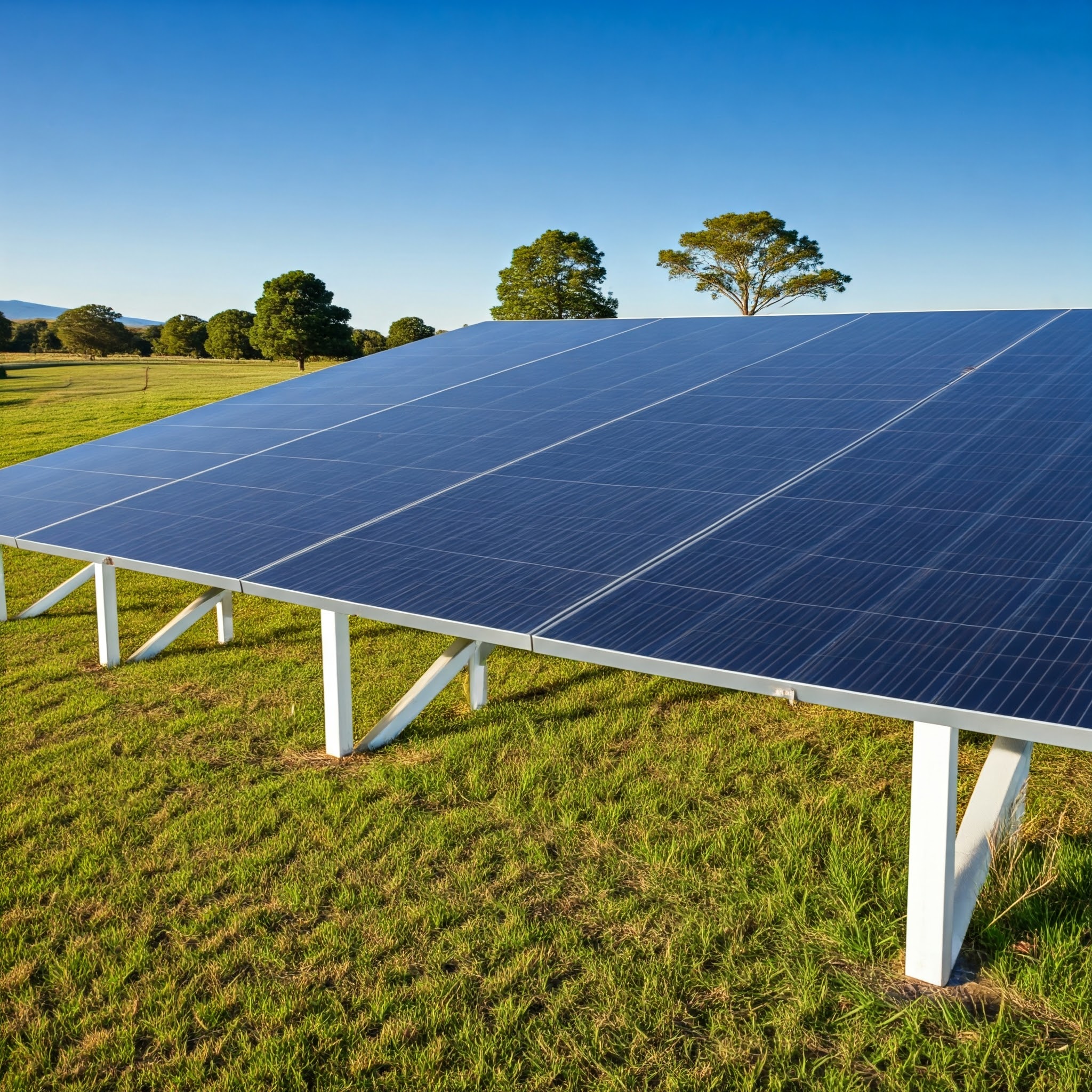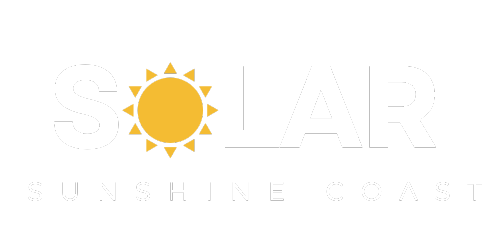Did you know that Australian households pay some of the highest electricity bills worldwide? Power prices jumped 25% in 2023 alone.
The good news is solar energy has become available to more people. Solar panel prices in Australia have fallen 58% in the last decade. Today, more than 3 million Australian homes use solar power to cut their energy bills and reduce their carbon footprint.
Your home’s energy future depends on understanding installation costs, potential savings, and government incentives. Let us explain everything about solar panel costs. We’ll cover your original investment and long-term returns that help you make a smart choice for your home.
Understanding Solar Panel Cost Components
A clear understanding of solar panel system costs will help you make smart decisions about your investment. Let’s look at what makes up the total cost of your solar installation.
Equipment Costs Breakdown
The price of core equipment changes based on quality and brand. A standard 6.6kW system with installation costs between AUD 8,409 and AUD 13,760. Premium panels from top manufacturers cost more but give better performance and last longer. The price per kilowatt goes down with larger systems, which makes bigger installations more economical per unit of power.
Installation and Labour Expenses
Labour makes up much of your solar investment. Several factors change these costs:
- Roof type and accessibility
- System size and complexity
- Installation location and travel requirements
- Multi-story installation requirements
Homes with tile roofs need more expensive mounting hardware and take longer to install than standard tin roofs. Multi-story installations cost more because of safety requirements and extra equipment needs.
Additional System Components
Your solar system needs several vital components beyond just panels and simple installation. A complete system has:
- Inverter System: Changes DC power to usable AC electricity, with prices that vary by type and capacity
- Mounting Hardware: Provides framework and brackets that secure panel installation
- Wiring and Electrical Components: Needed for uninterrupted operation and safety
- Monitoring Systems: Optional but useful to track system performance
A quality solar system’s total cost ranges from AUD 5,351 for a 3kW system to AUD 27,521 for a 15kW system. On top of that, microinverter or optimizer systems add about 20% to these base costs.
The quality of components affects long-term performance substantially. Just like choosing between car brands, you can pick from simple (‘Kia’ level) to premium (‘BMW’ level) components, and prices reflect these quality differences.
How to Calculate Your Solar System Size
Let’s first get the right solar system size for your home to ensure you get the best value for money. Here’s how we can work out your ideal system capacity.
Assessing Energy Consumption Patterns
Your electricity bills are the best starting point to understand your household’s energy needs. Australian homes typically use between 11-23 kWh per day. It’s worth getting into your seasonal usage patterns, as winter and summer consumption can vary quite a bit.
To work out your needs accurately:
- Collect 12 months of electricity bills
- Calculate your daily average consumption
- Note seasonal variations in usage
- Think about future needs (electric vehicles, home office)
- Review smart metre data if available
Determining Optimal Panel Capacity
We can help you calculate the exact system size you need instead of guessing. Each kilowatt of solar panels gets you about 4 kWh of electricity per day. So, a 6.6kW system produces around 26.4 kWh on a sunny day.
Single-person households typically use 8-12 kWh daily, while a five-person household’s pool might need 30-40 kWh per day. It makes sense to think about future needs when sizing your system because it will run for 20+ years.
Roof Space and Orientation Considerations
Your available roof space often sets the limit for your system size. A standard 6.6 kW system needs about 29-32 square metres of roof space.
Your roof’s orientation affects system performance this way:
- North-facing installations capture maximum sunlight throughout the day
- East-west orientations produce up to 15% less energy overall
- East-facing panels work best in morning hours
- West-facing panels shine during afternoon peaks
North-facing roofs work best, but east or west-facing installations can still deliver great results. Today’s solar technology gets good energy production even from less-than-perfect roof orientations. You might just need extra panels to make up for reduced efficiency.
Regional Price Variations Across Australia
Solar panel costs show interesting variations throughout Australia’s regions. Recent data analysis reveals what you might pay in your area.
State-by-State Cost Comparison
Price differences between Australian states tell an interesting story. Western Australia leads with the best rates at AUD 6,752.02, while Tasmania comes in higher at AUD 13,354.20. Average solar panel costs in major cities show these patterns:
| City | 6kW System Cost |
|---|---|
| Adelaide | AUD 7,690.82 |
| Brisbane | AUD 7,629.66 |
| Melbourne | AUD 7,843.72 |
| Sydney | AUD 7,996.62 |
| Perth | AUD 7,843.72 |
Local Installation Factors
Installation costs show substantial regional differences. South Australia’s average installation cost runs AUD 2,047.32, while New South Wales keeps costs lower at AUD 1,603.91.
Several factors affect regional prices:
- Market competition among installers
- Local regulations and permit requirements
- Accessibility and travel costs
- Labour availability and expertise
Climate Impact on System Requirements
Weather conditions shape system performance and requirements heavily. Weather patterns affect solar panel efficiency differently in each region. Latest research shows eastern Australia will see better conditions, with solar resource availability rising up to 1% by 2099.
Eastern regions can expect these changes:
- Extractable solar power duration will increase by up to 30 minutes yearly
- Minimum power generation periods will drop by about 25 minutes each year
- More clear-sky days will boost overall system efficiency
Western regions face their own challenges. Predictions point to slight decreases in solar resource availability of 0.25-0.5%. Your location plays a vital role when you plan a solar installation because of these climate variations.
Government Rebates and Incentives
Australian government incentives can help you save big on solar panel costs. Both federal and state governments provide rebates and subsidies that make solar power easier to afford.
Small-scale Technology Certificates (STCs)
The STC programme is the main solar incentive across Australia. A 6.6kW system installation in 2024 can get you a subsidy of about AUD 3,057.98. Your location affects the rebate amount. Darwin residents get the highest rebate at AUD 3,363.78 for a 6.6kW system.
The STC programme works through these rules:
- You must create certificates within 12 months of installation
- Your system needs to be under 100kW capacity
- All components must meet Clean Energy Council standards
State-Specific Solar Subsidies
Each state offers extra support on top of federal incentives:
Victoria gives you a solar panel rebate up to AUD 2,140.59. You can also get an interest-free loan for the same amount. Your upfront costs drop by a lot right after approval.
The ACT helps you with up to AUD 382,250 through their Solar for Low Income Programme. South Australia offers battery subsidies worth up to AUD 9,173.94.
Eligibility Criteria and Application Process
Check these requirements before you apply:
- Property Requirements:
- You must own and live in the property or have rental approval
- Your property value should be under AUD 4.59 million
- No solar panels installed in the last 10 years
- Income Thresholds:
- Your combined household income must be below AUD 321,087.95
- Concession card holders get special benefits
Here’s how to get your rebate:
- Look for approved retailers
- Get written quotes
- Submit your eligibility documents
- Wait for pre-approval
- Install within 120 days
Current STC prices are AUD 55.04 per certificate. This is a big deal as it means that your savings can add up fast. These incentives will keep reducing until 2030 unless market conditions change. Your retailer handles most paperwork after installation, which makes everything easier for you.
Return on Investment Calculations
Solar panel ROI calculations help you figure out if they make financial sense for your home. Let’s walk through the math to see how much you could save.
Energy Bill Savings Estimation
Our research reveals Australian homes with solar panels save AUD 1,146.74 on electricity bills each year. Homes that make the most of their solar power can save up to AUD 1,528.99 yearly.
Here’s how to work out your savings:
- Review your current electricity consumption
- Multiply your usage by current electricity rates
- Calculate potential solar generation
- Subtract remaining grid electricity needs
- Factor in seasonal variations
Feed-in Tariff Benefits
Feed-in tariffs range from 7-11 cents per kilowatt-hour in Australia. These rates can boost your returns a lot, especially when your system produces extra power.
Here’s what you need to know about feed-in tariffs:
- Rates vary by retailer and location
- Higher generation during peak sunlight hours
- Export limits may apply
- Seasonal variations in generation
Different retailers offer varying feed-in tariff rates that can affect your overall returns. The best financial outcome comes from using most of your solar power while getting paid for any excess.
Payback Period Analysis
Solar panels in Australia typically pay for themselves in 3 to 5 years. Several things can change this timeline:
| System Size | Annual Savings | Typical Payback |
|---|---|---|
| 5kW | AUD 3,058.00 | 2.5-4.5 years |
| 6.6kW | AUD 3,860.70 | 3-4 years |
| 8kW | AUD 4,586.97 | 2.67-4 years |
System quality plays a big role in your long-term returns. Premium systems might take longer to pay off but last seven years more than cheaper options.
Your returns will be better if you:
- Time your energy usage with peak solar production
- Consider future electricity price increases
- Monitor system performance regularly
- Maintain panels for optimal efficiency
Quality panels are designed to last 25+ years, so they keep creating value long after paying for themselves. Your actual returns could be much higher over the system’s full life.
Conclusion
Solar power has become a smart investment for Australian homeowners, particularly as electricity prices hit record highs. Our complete analysis shows solar panel costs are now more affordable. Quality 6.6kW systems range from AUD 8,409 to AUD 13,760.
Australian homeowners can take advantage of federal STCs and state-specific rebates to switch to solar power in 2024. Most households see their investment returned within 3-5 years. The switch brings annual savings of AUD 1,146.74 or more on electricity bills.
Your solar installation’s success depends on careful planning. You need the right system size, quality components, and maximum use of roof space and sunshine exposure. A certified installer and premium components will give your system optimal performance throughout its 25+ year lifespan.
Energy independence begins with understanding your home’s specific needs and local conditions. We suggest getting multiple quotes from certified installers. This approach helps you compare options and make the best choice for your home’s energy future.
